
Giulio Ruffini
@ruffini.bsky.social
Physicist working on computational neuroscience, brain stimulation and foundational aspects of (meta)physics, swimming and music during spare CPU cycles. Neuroelectrics.com, Starlab.es
4/5
Proof‑of‑concept in a laminar neural mass model: a fast PING‑like circuit acts as the carrier; a slower Jansen‑Rit circuit modulates/extracts the envelope. We observe gamma sidebands and staged demodulation (Fig. 3.1, p. 14).
Proof‑of‑concept in a laminar neural mass model: a fast PING‑like circuit acts as the carrier; a slower Jansen‑Rit circuit modulates/extracts the envelope. We observe gamma sidebands and staged demodulation (Fig. 3.1, p. 14).

November 5, 2025 at 5:00 PM
4/5
Proof‑of‑concept in a laminar neural mass model: a fast PING‑like circuit acts as the carrier; a slower Jansen‑Rit circuit modulates/extracts the envelope. We observe gamma sidebands and staged demodulation (Fig. 3.1, p. 14).
Proof‑of‑concept in a laminar neural mass model: a fast PING‑like circuit acts as the carrier; a slower Jansen‑Rit circuit modulates/extracts the envelope. We observe gamma sidebands and staged demodulation (Fig. 3.1, p. 14).
HAM also explains spectral “1/f” structure. In a cascade, the aperiodic slope obeys α = 2 ln(2/m)/ln r (m=modulation depth, r=spacing). A log‑uniform bank of oscillators gives a 1/f backbone (see Fig. 2.3, p. 10). 3/5


November 5, 2025 at 5:00 PM
HAM also explains spectral “1/f” structure. In a cascade, the aperiodic slope obeys α = 2 ln(2/m)/ln r (m=modulation depth, r=spacing). A log‑uniform bank of oscillators gives a 1/f backbone (see Fig. 2.3, p. 10). 3/5
This multiplicative mixing creates intermodulation terms (fc ± Σ ai fi). To keep bands separable & demodulable, centers should be log‑spaced with ratio r ≳ 2–3 (constant‑Q)—matching canonical delta→gamma spacing (see Fig. 1.1, p. 5). 2/5

November 5, 2025 at 5:00 PM
This multiplicative mixing creates intermodulation terms (fc ± Σ ai fi). To keep bands separable & demodulable, centers should be log‑spaced with ratio r ≳ 2–3 (constant‑Q)—matching canonical delta→gamma spacing (see Fig. 1.1, p. 5). 2/5
New preprint 🪢: Neural Encoding through Hierarchical Amplitude Modulation (HAM). Slower rhythms multiplicatively modulate the amplitude of faster ones, so information can live in signals, their envelopes, and envelopes‑of‑envelopes. 1/5

November 5, 2025 at 5:00 PM
New preprint 🪢: Neural Encoding through Hierarchical Amplitude Modulation (HAM). Slower rhythms multiplicatively modulate the amplitude of faster ones, so information can live in signals, their envelopes, and envelopes‑of‑envelopes. 1/5
8) Bonus: the regulator displays an improved compression with regulator ON ⇒ the regulator shares structure with the world.
Bonus: the regulator displays as-if behavior with Objective Function + Policy (algorithmic agenthood!).
Bonus: the regulator displays as-if behavior with Objective Function + Policy (algorithmic agenthood!).

October 15, 2025 at 1:02 PM
8) Bonus: the regulator displays an improved compression with regulator ON ⇒ the regulator shares structure with the world.
Bonus: the regulator displays as-if behavior with Objective Function + Policy (algorithmic agenthood!).
Bonus: the regulator displays as-if behavior with Objective Function + Policy (algorithmic agenthood!).
7) Example (thermostat): a dead‑band bang‑bang thermostat (no integrator ⇒ fails IMP for constant refs) can still be a good algorithmic regulator if it keeps the error stream regular/compressible (e.g., a simple limit cycle).


October 15, 2025 at 1:02 PM
7) Example (thermostat): a dead‑band bang‑bang thermostat (no integrator ⇒ fails IMP for constant refs) can still be a good algorithmic regulator if it keeps the error stream regular/compressible (e.g., a simple limit cycle).
6) Relation to IMP: The Internal Model Principle gives structural necessity (embed a copy of the exosystem for perfect regulation). Our result gives information‑theoretic necessity from single episodes, with no linearity/probability/exactness assumptions.

October 15, 2025 at 1:02 PM
6) Relation to IMP: The Internal Model Principle gives structural necessity (embed a copy of the exosystem for perfect regulation). Our result gives information‑theoretic necessity from single episodes, with no linearity/probability/exactness assumptions.
5) Main theorem: a statement about the posterior on the W, R pair. Meaning: a sustained compressibility advantage is evidence that the regulator contains a model of the world, formalized as positive mutual algorithmic information – M(W,R)>0.

October 15, 2025 at 1:02 PM
5) Main theorem: a statement about the posterior on the W, R pair. Meaning: a sustained compressibility advantage is evidence that the regulator contains a model of the world, formalized as positive mutual algorithmic information – M(W,R)>0.
4) Following the AIT rabbit, we score regulation by the Kolmogorov complexity of the output K(x). This is actually intuitive (e.g., perfect regulation = output is all 0s!).

October 15, 2025 at 1:02 PM
4) Following the AIT rabbit, we score regulation by the Kolmogorov complexity of the output K(x). This is actually intuitive (e.g., perfect regulation = output is all 0s!).
News🥁! Preprint on an AIT version of the Good Regulator Theorem. World (W) and Regulator (R) are Turing machines interacting via "interface" tapes. Regulation =: compression of W output (e.g., x = temperature series of a room). #Cybernetics #AlT #ActiveInference arxiv.org/abs/2510.10300 1/9


October 15, 2025 at 1:02 PM
News🥁! Preprint on an AIT version of the Good Regulator Theorem. World (W) and Regulator (R) are Turing machines interacting via "interface" tapes. Regulation =: compression of W output (e.g., x = temperature series of a room). #Cybernetics #AlT #ActiveInference arxiv.org/abs/2510.10300 1/9
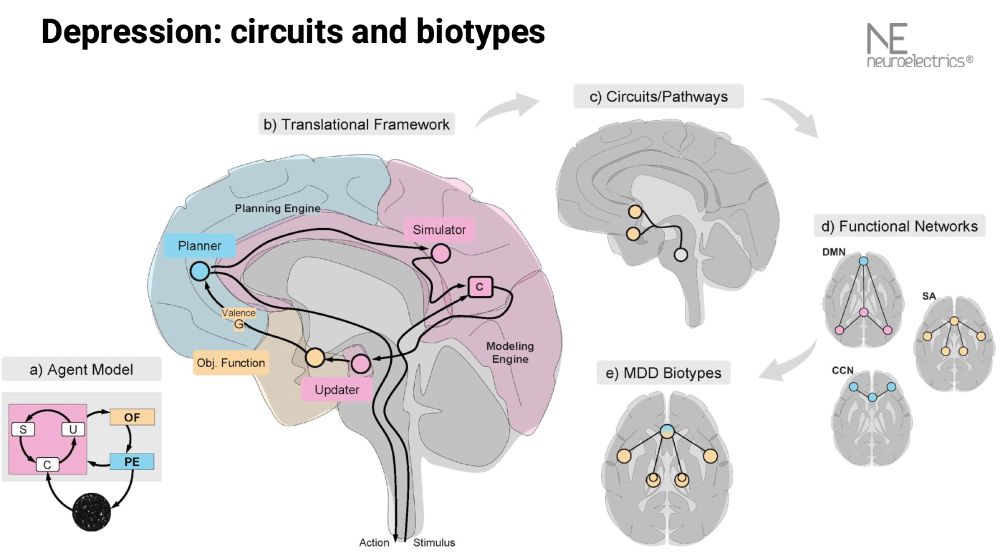
July 11, 2025 at 10:24 PM
What does Kolmogorov Complexity have to do with brain stimulation? I say ... a lot!
www.dropbox.com/scl/fi/7dekr...
www.dropbox.com/scl/fi/7dekr...
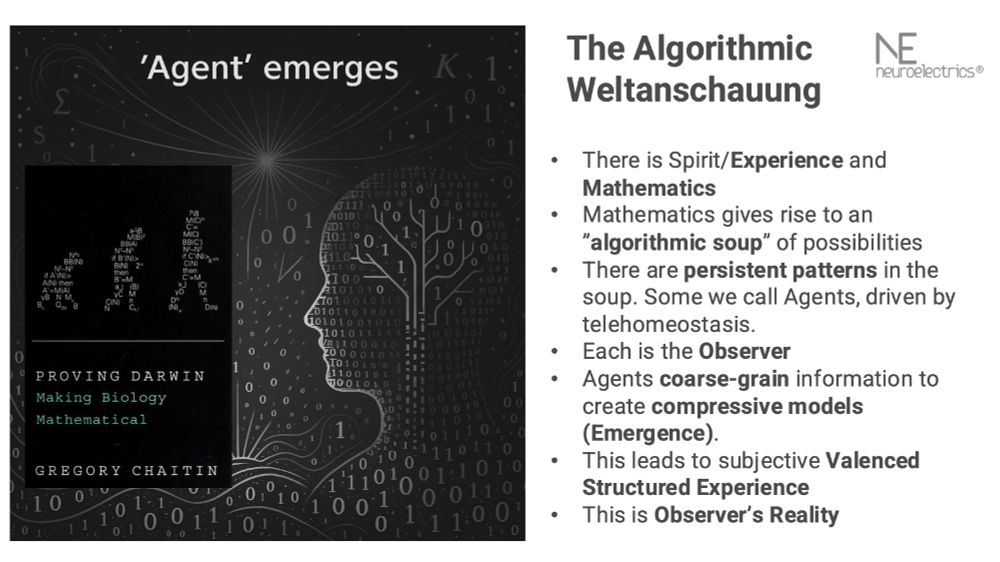
July 11, 2025 at 10:24 PM
What does Kolmogorov Complexity have to do with brain stimulation? I say ... a lot!
www.dropbox.com/scl/fi/7dekr...
www.dropbox.com/scl/fi/7dekr...
My slides from The Science of Consciousness (Barcelona 2025) Plenary talk this week! "From Kolmogorov Theory to Computational Modeling and Brain Stimulation". #consciousness #neuromodulation

July 11, 2025 at 10:24 PM
My slides from The Science of Consciousness (Barcelona 2025) Plenary talk this week! "From Kolmogorov Theory to Computational Modeling and Brain Stimulation". #consciousness #neuromodulation
If you like the music, consider sending a paper to our special Issue, "The Mathematics of Structured Experience: Exploring Dynamics, Topology, and Complexity in the Brain". See www.mdpi.com/journal/entr...

July 11, 2025 at 9:55 PM
If you like the music, consider sending a paper to our special Issue, "The Mathematics of Structured Experience: Exploring Dynamics, Topology, and Complexity in the Brain". See www.mdpi.com/journal/entr...
Here's our poster – "Algorithmic Structure and Lie Groups" – at ICMNS 2025 (Barcelona): www.dropbox.com/scl/fi/qbn55...
It is a summary of our recent paper, Structured Dynamics in the Algorithmic Agent (www.mdpi.com/1099-4300/27...).
It is a summary of our recent paper, Structured Dynamics in the Algorithmic Agent (www.mdpi.com/1099-4300/27...).
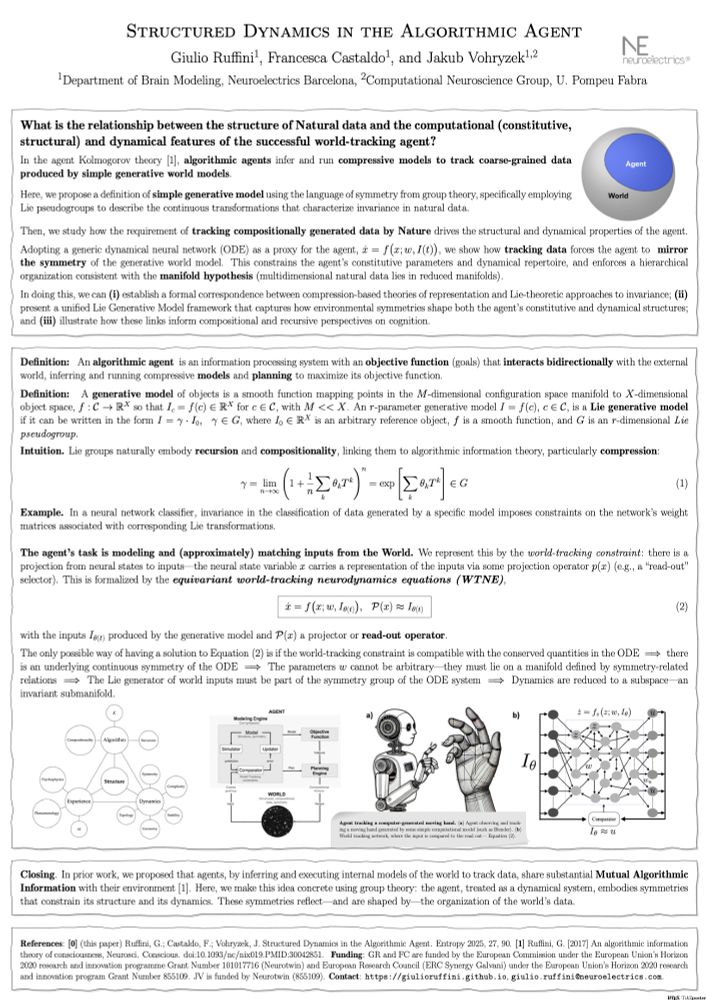
July 11, 2025 at 9:55 PM
Here's our poster – "Algorithmic Structure and Lie Groups" – at ICMNS 2025 (Barcelona): www.dropbox.com/scl/fi/qbn55...
It is a summary of our recent paper, Structured Dynamics in the Algorithmic Agent (www.mdpi.com/1099-4300/27...).
It is a summary of our recent paper, Structured Dynamics in the Algorithmic Agent (www.mdpi.com/1099-4300/27...).
13. Conclusion
LaNMM is not just another NMM — it’s a physically grounded, biophysically realistic platform that integrates structure, dynamics, and function. Expect to see more work where biology meets theory, with LaNMM at the core!
@neurotwin @galvani_lab @neuroelectrics.bsky.social
LaNMM is not just another NMM — it’s a physically grounded, biophysically realistic platform that integrates structure, dynamics, and function. Expect to see more work where biology meets theory, with LaNMM at the core!
@neurotwin @galvani_lab @neuroelectrics.bsky.social
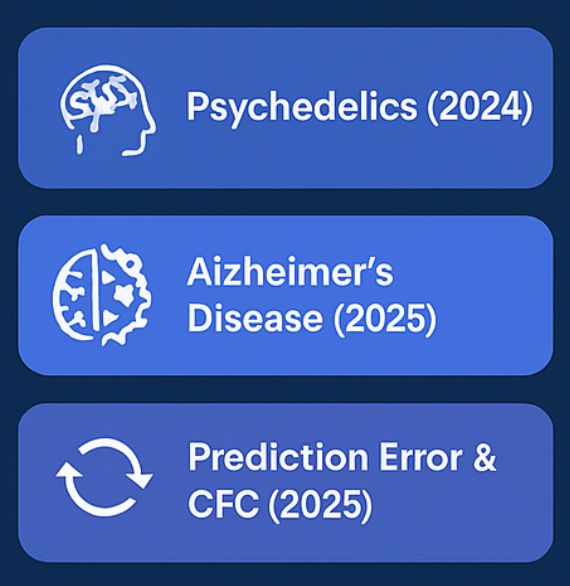
April 10, 2025 at 11:17 AM
13. Conclusion
LaNMM is not just another NMM — it’s a physically grounded, biophysically realistic platform that integrates structure, dynamics, and function. Expect to see more work where biology meets theory, with LaNMM at the core!
@neurotwin @galvani_lab @neuroelectrics.bsky.social
LaNMM is not just another NMM — it’s a physically grounded, biophysically realistic platform that integrates structure, dynamics, and function. Expect to see more work where biology meets theory, with LaNMM at the core!
@neurotwin @galvani_lab @neuroelectrics.bsky.social
🧵 Thread: 1. The Laminar Neural Mass Model (LaNMM) — A Unified Framework for Oscillatory Dynamics in Health and Disease (news!)
The Laminar Neural Mass Model (LaNMM) links circuit-level mechanisms to M/EEG biomarkers across brain states — from healthy function to disease and altered consciousness.
The Laminar Neural Mass Model (LaNMM) links circuit-level mechanisms to M/EEG biomarkers across brain states — from healthy function to disease and altered consciousness.
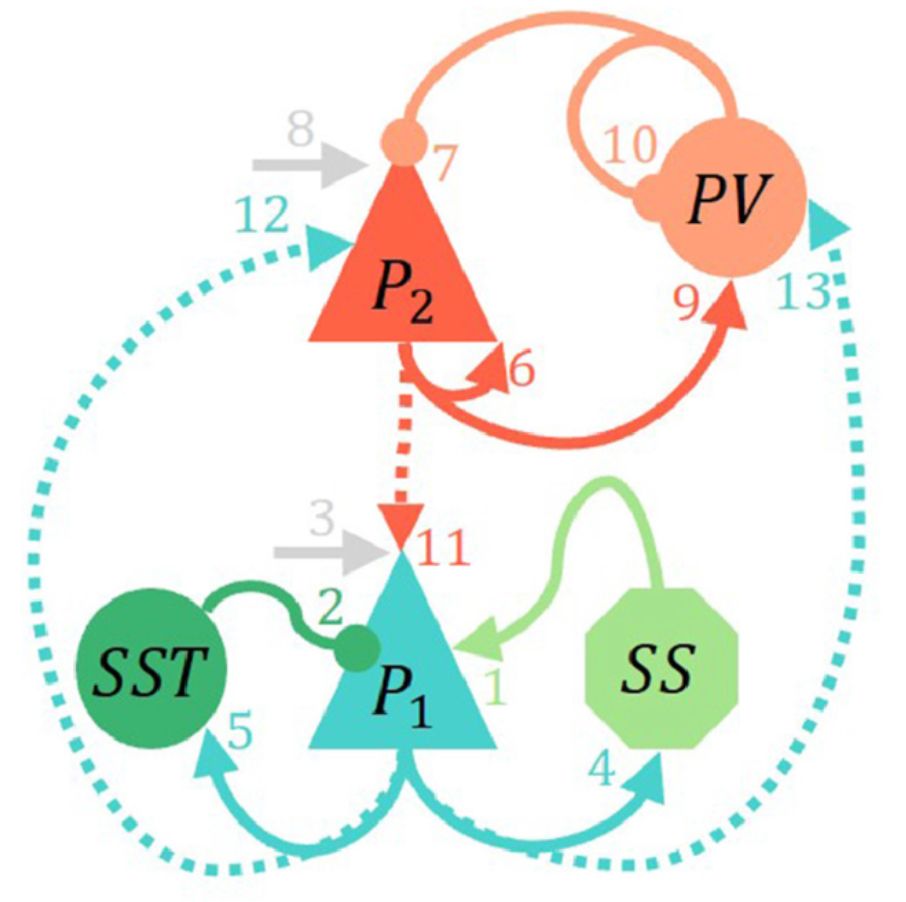
April 10, 2025 at 11:17 AM
🧵 Thread: 1. The Laminar Neural Mass Model (LaNMM) — A Unified Framework for Oscillatory Dynamics in Health and Disease (news!)
The Laminar Neural Mass Model (LaNMM) links circuit-level mechanisms to M/EEG biomarkers across brain states — from healthy function to disease and altered consciousness.
The Laminar Neural Mass Model (LaNMM) links circuit-level mechanisms to M/EEG biomarkers across brain states — from healthy function to disease and altered consciousness.
Psychedelics increase EEG complexity and entropy—markers of a flexible, healthier brain network. This may counteract AD’s rigid neural patterns. #Entropy #NetworkFlexibility See prior work in mdpi.com/1099-4300/26... and journals.plos.org/ploscompbiol...

December 23, 2024 at 8:40 AM
Psychedelics increase EEG complexity and entropy—markers of a flexible, healthier brain network. This may counteract AD’s rigid neural patterns. #Entropy #NetworkFlexibility See prior work in mdpi.com/1099-4300/26... and journals.plos.org/ploscompbiol...
Key result: Psychedelics suppress alpha band power (linked to hyper-synchronization in AD) and enhance gamma oscillations (important for cognitive processes). This rebalances brain dynamics. #BrainOscillations

December 23, 2024 at 8:40 AM
Key result: Psychedelics suppress alpha band power (linked to hyper-synchronization in AD) and enhance gamma oscillations (important for cognitive processes). This rebalances brain dynamics. #BrainOscillations
Based on our laminar model, we model serotonin receptor activation in 30 AD patients using multimodal neuroimaging (MRI, fMRI, PET). The models simulate EEG changes under psychedelics, revealing insights into altered neural dynamics. #AI #BrainModels

December 23, 2024 at 8:40 AM
Based on our laminar model, we model serotonin receptor activation in 30 AD patients using multimodal neuroimaging (MRI, fMRI, PET). The models simulate EEG changes under psychedelics, revealing insights into altered neural dynamics. #AI #BrainModels
Current treatments for AD address symptoms but fail to tackle the underlying disruptions in brain dynamics. Psychedelics, like serotonin 2A receptor agonists, may offer a novel therapeutic pathway. #Alzheimers #Neuroscience

December 23, 2024 at 8:40 AM
Current treatments for AD address symptoms but fail to tackle the underlying disruptions in brain dynamics. Psychedelics, like serotonin 2A receptor agonists, may offer a novel therapeutic pathway. #Alzheimers #Neuroscience
Hypothesis of Structured Experience in KT:
Structured experience (𝒮) arises when an agent uses compressive, accurate models to interact with the world.
In depression, one or more agent systems falter, leading to persistent low valence.
🌐 KT offers a roadmap to model-driven neuropsychiatry.
Structured experience (𝒮) arises when an agent uses compressive, accurate models to interact with the world.
In depression, one or more agent systems falter, leading to persistent low valence.
🌐 KT offers a roadmap to model-driven neuropsychiatry.

November 15, 2024 at 7:00 AM
Hypothesis of Structured Experience in KT:
Structured experience (𝒮) arises when an agent uses compressive, accurate models to interact with the world.
In depression, one or more agent systems falter, leading to persistent low valence.
🌐 KT offers a roadmap to model-driven neuropsychiatry.
Structured experience (𝒮) arises when an agent uses compressive, accurate models to interact with the world.
In depression, one or more agent systems falter, leading to persistent low valence.
🌐 KT offers a roadmap to model-driven neuropsychiatry.
Why does an agent enter a state of low valence?
In this framework, depression stems from disruptions in:
•Modeling Engine (linked to posterior cingulate cortex, hippocampus)
•Objective Function (amygdala, ventral striatum)
•Planning Engine
3/n
In this framework, depression stems from disruptions in:
•Modeling Engine (linked to posterior cingulate cortex, hippocampus)
•Objective Function (amygdala, ventral striatum)
•Planning Engine
3/n

November 15, 2024 at 6:57 AM
Why does an agent enter a state of low valence?
In this framework, depression stems from disruptions in:
•Modeling Engine (linked to posterior cingulate cortex, hippocampus)
•Objective Function (amygdala, ventral striatum)
•Planning Engine
3/n
In this framework, depression stems from disruptions in:
•Modeling Engine (linked to posterior cingulate cortex, hippocampus)
•Objective Function (amygdala, ventral striatum)
•Planning Engine
3/n
New preprint for the KT framework released! After Neural Geometrodynamics (www.biorxiv.org/content/10.1...) comes Structured Dynamics in the Algorithmic Agent.
sciencecast.org/casts/jq63ve...
sciencecast.org/casts/jq63ve...

December 16, 2023 at 2:59 PM
New preprint for the KT framework released! After Neural Geometrodynamics (www.biorxiv.org/content/10.1...) comes Structured Dynamics in the Algorithmic Agent.
sciencecast.org/casts/jq63ve...
sciencecast.org/casts/jq63ve...

